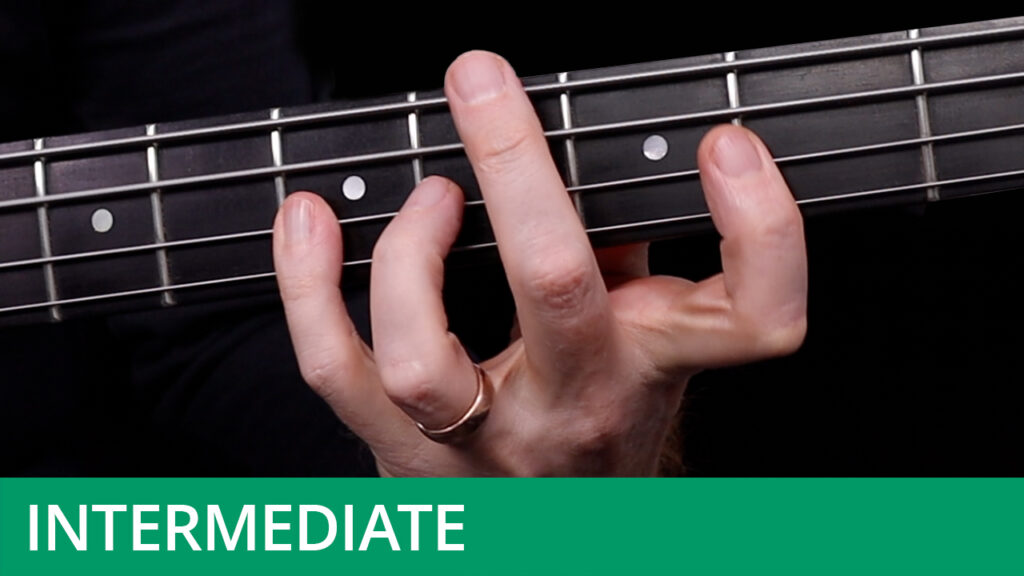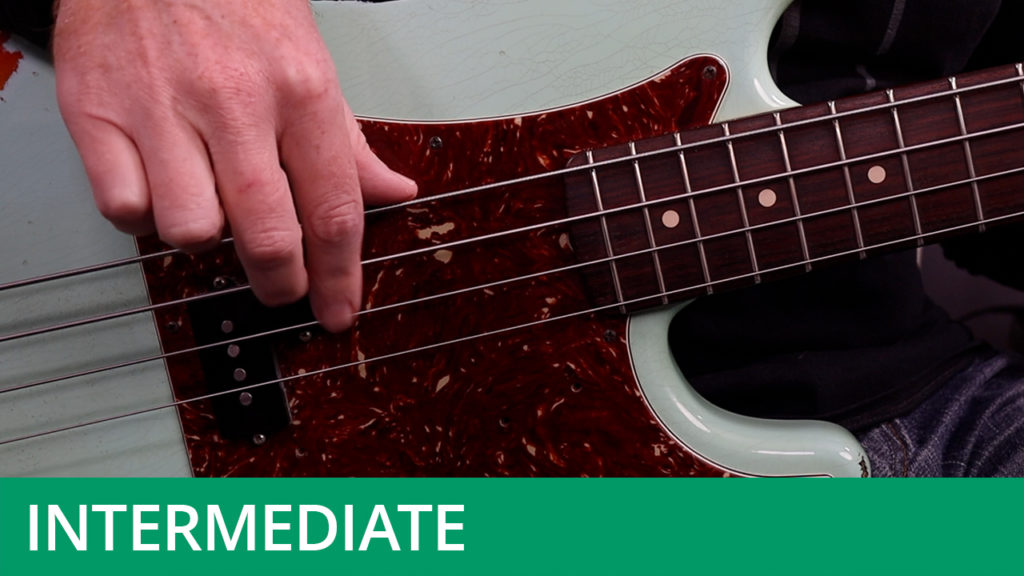The Blues Scale (Part 1)
Course Duration: 30 Minutes | Difficulty Level: 4
This course is an in-depth examination of one of the most commonly-used scales – the blues scale. As you’ll discover, the blues scale is simply the minor pentatonic scale, with an added ‘blue’ note. With that in mind, it would be a good idea to have worked through the Minor Pentatonic Scale video course before tackling this one.
The blues scale is important for all musicians as it has multiple applications: it works over many different chord types and fits perfectly in most styles of music. With that in mind, this course covers ways in which to learn the scale all over the fretboard (without relying on shapes or patterns) and then puts it to use in a series of ‘real world’ bass grooves. The first few exercises are based around an A blues scale (a logical key to start learning the scale with), after which there are lines written in other keys. By the end of this course you should be very familiar with the sound of the blues scale and you’ll find that it makes a valuable addition to your scale vocabulary.
Don’t forget to hit the Download Resources button above to get the PDF worksheet and audio files for this piece (available to subscribers only).The worksheet is available with TAB and without.



